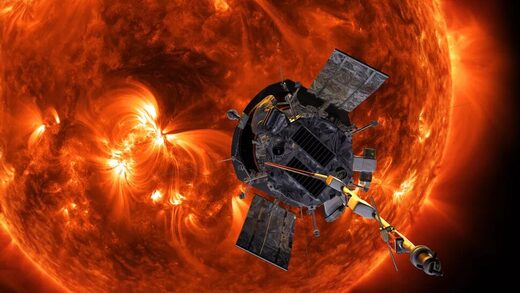
Messier 87 is an elliptical galaxy located some 53 million light-years from us in the constellation of Virgo.
Also known as M87, NGC 4486 or Virgo A, it hosts a black hole some 6.5 billion times more massive than the Sun at its center. Messier 87's black hole is the first one ever to be imaged — an achievement done with the Event Horizon Telescope (EHT) and announced in 2019.
Earlier this year, new EHT images traced the magnetic field in the vicinity of the black hole event horizon.
National Autonomous University of Mexico's Dr. Alice Pasetto and colleagues used the Very Large Array (VLA) to reveal details of the magnetic field by tracing the polarization, or alignment, of radio waves emitted from it, and by measuring the field's strength across different parts of the jet.
Their observations, made using the VLA's widest configuration that provides the highest resolution, produced very detailed images of the galaxy's jet.
"By making high-quality VLA images at several different radio wavelengths of the galaxy Messier 87 (M87), we were able to reveal the 3D structure of the magnetic field in this jet for the first time," Dr. Pasetto said.
"The material in this jet traces a double helix, similar to the structure of DNA."
"Helical magnetic fields are expected close to the black hole, and are thought to play a highly important role in channeling the material into a narrow jet, but we didn't expect to find such a strong helical field extending so far outward," added Dr. Jose Marti, an astronomer at the University of Valencia.

However, the astronomers suggested that instabilities in the flow of material within the jet could make the magnetic field more ordered at the distances seen in the new VLA images.
The instabilities produce regions of higher pressure which also compress the magnetic field lines. The authors think that this interaction between instabilities in the flow and the magnetic field is what produces the double-helix structure shown by the VLA images.
If this is happening in the Messier 87 jet, it likely also is happening in similar jets from galaxies throughout the Universe.
"Messier 87 is relatively near to us and its jet is very powerful, making it an excellent target for study," said Dr. Jose Gomez, an astronomer at IAA-CSIC.
"The clues it gives us can help us understand this very important and ubiquitous phenomenon in the Universe."
The findings were published in the Astrophysical Journal Letters.
Reference: Alice Pasetto et al. 2021. Reading M87's DNA: A Double Helix Revealing a Large-scale Helical Magnetic Field. ApJL 923, L5; doi: 10.3847/2041-8213/ac3a88




At least that is what I was taught in my day and age. Now we have this link below,
that a probe has entered the Sun's orbit in 2018
So it begs the question from me, what is truth and what are lies, is the information we have been given concerning the Sun under which we live, nothing more than hypothesis, suppositions and what is the real truth?
This presentation from the Hill! of all publications, not Earth and Sky or some other astronomical publication, anyway here it is. Your decide
[Link] From the Hill Changing America....Hm
NASA spacecraft touches the sun for the first time ever